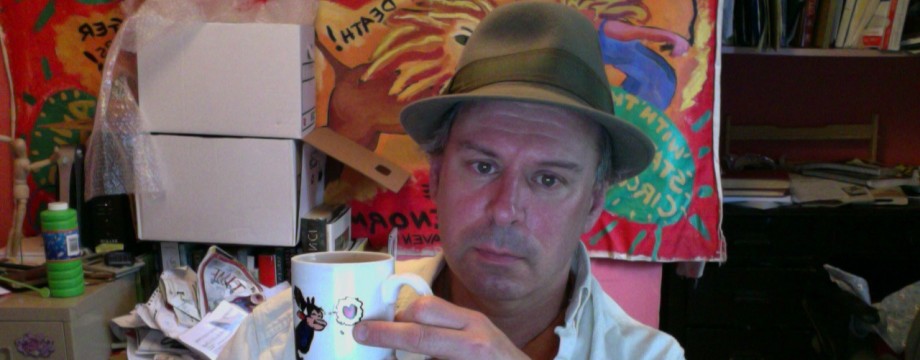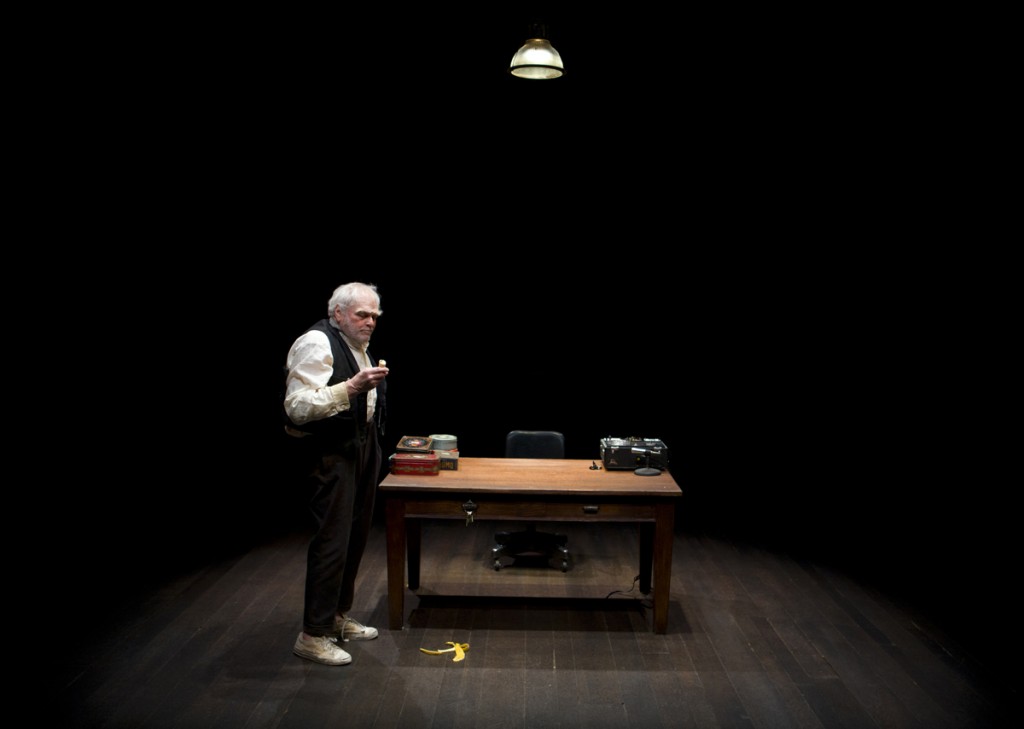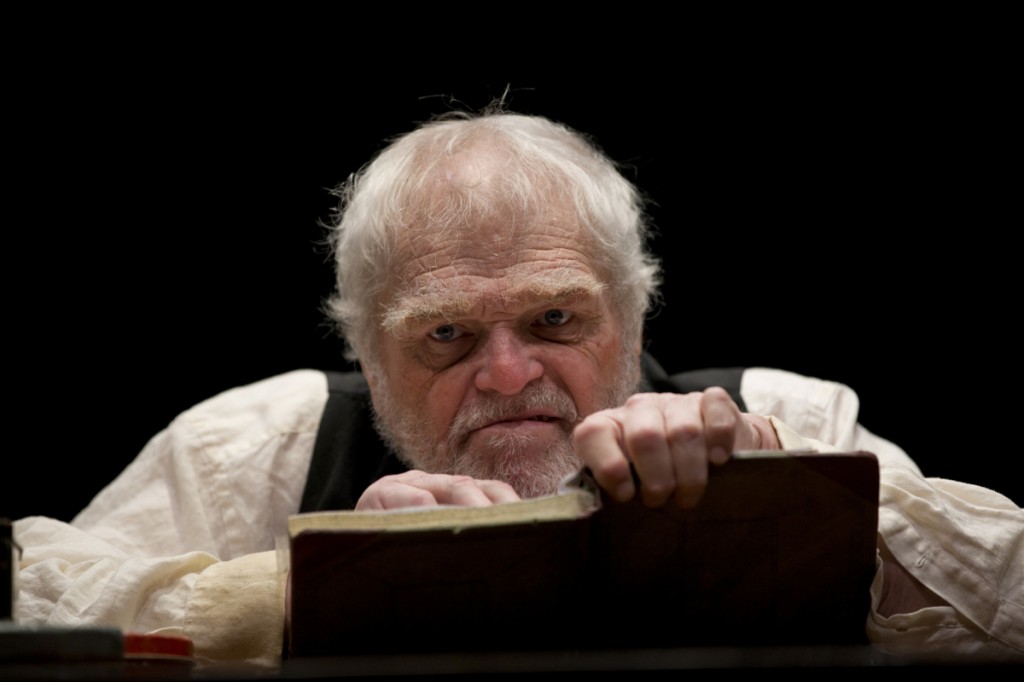Krapp’s Last Tape
Through Dec. 18 at Long Wharf Stage II. By Samuel Beckett. Directed by Jennifer Tarver. Performed by Brian Dennehy. Set & Costume Design: Eugene Lee. Lighting Design: Stephen Strawbridge. Sound Design: Richard Woodbury. Stage Manager: Katrina Lynn Olson.
Krapp’s den. Front center a small table, just a few feet from the front row of the audience.
A wearish man enters. He receives applause, because he is Brian Dennehy.
Black roomy trousers with tan tennis shoes. Wide black vest like late-era Buster Keaton. Workshirt. Red blushy cheeks. White hair. Unshaven.
You’ll notice a few digressions from Beckett’s stage directions there. No big boots. No “White face. Purple nose. Disordered grey hair.”
Dennehy takes the banana joke, the opening routine and guiding metaphor of Beckett’s play and Krapp’s existence—that life is a joke, that we slip on banana peels—and makes sure that the joke is nonetheless funny. This requires some unexpected physical humor, neatly spaced and timed and appropriate for a elderly man (Dennehy is 73, his Krapp character 69), and as genuinely funny in its way as any of the antic shtick occurring across town at the Yale Rep in A Doctor in Spite of Himself.
Krapp reaches for his trusty reels. They are in square cookie tins, which make for a nice clatter later on; this production doesn’t miss a trick. Dennehy turns the machine on and off expertly in time with the pre-recorded computerized sound of his Krapp as a younger man. The younger voice is broadcast with such pristine clarity that it doesn’t sound at all like it could come out of a decades-old tape machine. Which is either a design oversight or a deliberate directorial choice to make Krapp’s past seem rosier and more present than it really is.
In any case, it’s easy to take in.
The words are clear, the journey easy to follow. Dennehy’s Krapp takes breaks, walks into the set’s back room, switches lights on and off. Another joke: the sound of a bottle pouring. The pouring lasts longer each time Krapp needs a drink.
We are motionless, staring. The tape runs on. There is nothing much to say. There is no applause, because the audience is overcome. Or perhaps they just don’t know if Krapp is finished. A final joke is a production that looks for and finds the balance of humor and sadness in Beckett’s classic play.
Take any opportunity to see Krapp’s Last Tape that you can. It will inform your life. It will inform your impending death. It will let you appreciate tragedians as comedians and vice versa. Seeing Brian Dennehy, who’s performed this piece twice before in recent years at much differently shaped theaters, may make you want to go to BAM this month and see its ballyhooed production starring John Hurt. Perhaps Hurt and Dennehy should hold a DJ battle in some neutral turf (New Jersey?), battling Krapps spinning memories at different speeds.
There is a myth of Beckett being difficult. There is a sense of his writing being so precise, and his estate being so protective of the purity of his intent, that stagings of his plays can be nothing but clinical, overliterary, hard to humanize. This is poppycock. Yell back at those academic cranks the way Krapp giggles at his tapes. Beckett understands how theater works. Brian Dennehy and director Jennifer Tarver understand how Beckett works. Sit back and let the tape unspool. You’re in good banana-slippery hands.



I see you share interesting things here, you can earn some extra cash, your blog has big potential, for the monetizing method, just type in google – K2 advices how to monetize a website